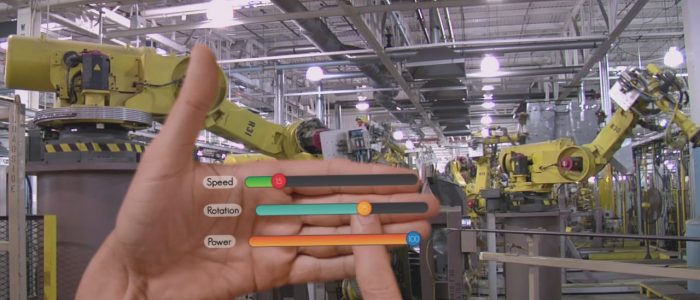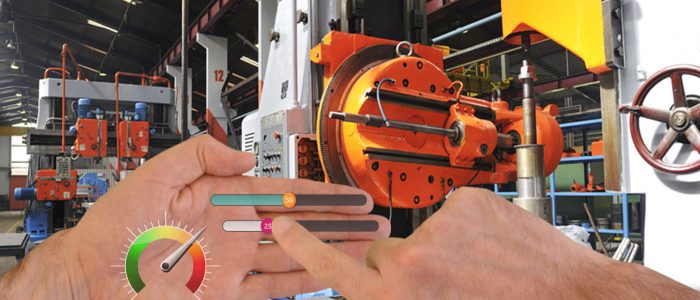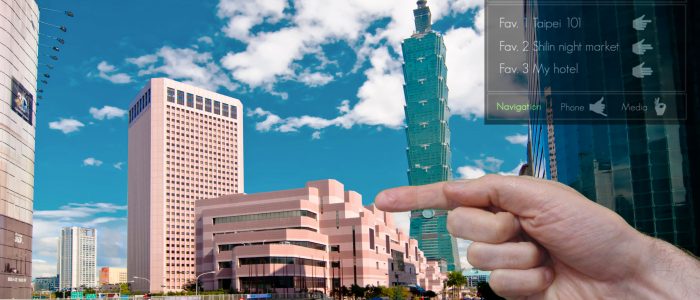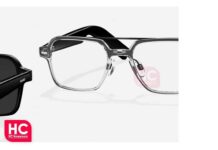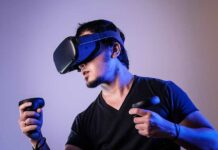Augumenta was founded in 2012 by Tero Aaltonen (CEO), Peter Antoniac (CTO) and Damien Douxchamps (CRO). They concluded that on the intersection between computing and users interaction between the 2 entities caused persistent issues that had to be solved. Should the machine think like a man or the man think like the machine?
Augumenta made it their core business to provide an intuitive answer to that question. Their innovations provide man-to-machine interaction tools of which augmented reality is one of the technologies they deploy in their new product, launched in July 2014.
The Augumenta Interaction Platform allows you to add on gesture control and AR onto any vision-enabled wearable. It creates gesture shortcuts to your favourite apps and tasks. Moreover it offers virtual input surfaces, for inputting data in a secure fashion using augmented reality (AR).
WT interviewed CEO Tero Aaltonen.
1. Let´s dissect your product in terms of technologies types: what enabling technologies is the Augumenta product made of?
“The key hardware enabler is any standard 2D camera that exits on devices such as Google Glass. The 2nd vital ingredient is the underlying computing platform. Our founding team has a long history on the field of both AR as well as computer vision and we have spent countless hours developing computer vision algorithms that enable solid gesture control and user input in challenging environments.
Wearables are not an easy challenge to tackle: users are wearing them all the time and expect them to perform in any user environment: walking on a busy street or entering a security code in low light conditions are some of the use cases we had to take into account when developing the platform. We have packaged our complex technologies into a compact SDK, which requires a computing platform to run on. Our platform currently runs on a standard CPU that you find on wearables and we have optimized the platform in such a way as to guarantee performance levels. Our chipset partners are developing exciting new hardware acceleration methods that will bring further enhancements to performance and battery life.”
2. Babak Parviz is leaving Google for Amazon* to probably work on their 3D and augmented reality programs. Both Google and Amazon are giants who have invested in innovative optical technologies. How do you see the role of Augumenta in these market developments?
“Wearables are a fast-growing market and we are excited to see new players entering the field. Every device manufacturer and application developer is facing the same dilemma: how to make their product user-friendly and easy to use. Usability is the key to higher device sales volumes. We work together with OEMs, system integrators and application developers to help them create a product end-users will love interacting with.”
3. What is your unique selling point compared to other players in the market?
“Our product runs on any Glass 2.0 product. We don’t have any specific hardware requirements as any smart glass is good as it is. Second of all I believe we really succeeded in designing a platform designed for an active lifestyle. The product performs well in challenging environments such as low-light or fast movement.
What is also important for me to highlight is that we are platform-independent: Augumenta Interaction Platform runs on your chosen OS: be it Android, Tizen or something else.”
4. What other areas can you potentially see your technology applied to?
“There are various device segments outside wearables where our technology could be applied: automotive, mobile, household appliances etc. However, the field of wearables alone has lots of interesting verticals: medical, logistics, oil&gas fields, service and maintenance and the consumer market.”
5. Where are you hoping Augumenta will be in 3 years?
“Our goal is to have a healthy ecosystem of developers who bring innovative solutions to markets based on our technology and it is our ambition that our products are used in enterprise and consumer focused wearables.
We are currently located in Finland, Taiwan and Japan but establishing operations in US and other key markets will be part of our global growth strategy. Innovation is in our DNA. Gesture control with AR is just the beginning for us. Our long-term mission is to bring innovative interaction solutions for wearable devices, and as the market keeps on evolving, so will we.”
Source: The Creator Of Google Glass Is Leaving Google To Work At Amazon













